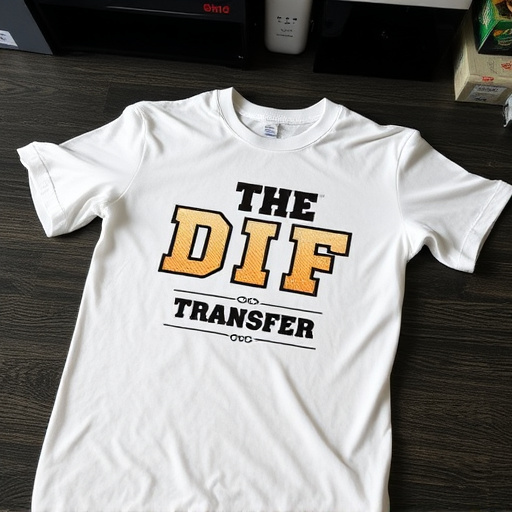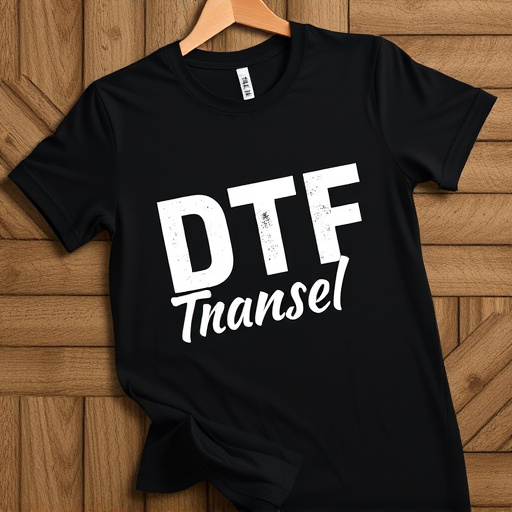Direct-to-film (DTF) transfer technology is revolutionizing the textile industry by enabling high-quality printing directly onto fabrics, resulting in vibrant colors and crisp details that last. This innovative process is faster than traditional methods, maintains color accuracy through multiple washes, and is ideal for bulk orders of branded apparel, promotional items, and fashion accessories. DTF printing uses heat and pressure to transfer designs directly into fabric fibers, offering superior durability and vibrancy for garments. The quality of DTF prints after washing depends on factors like ink type, garment material, washing technique, and care instructions. To maintain print quality, choose high-quality films, follow precise application guidelines, store properly, use cold water and mild detergent, and avoid harsh chemicals or high temperatures. Common mistakes like improper preparation and post-process washing can negatively impact print quality, so ensure surface cleanliness, slightly roughen substrates, and adhere to manufacturer guidelines. DTF printing has proven its reliability in apparel and marketing sectors, transforming custom T-shirt production and promotional materials like mugs, phone cases, and stickers.
“Discover the future of print quality with Direct-to-Film (DTF) transfer technology, ensuring vibrant colors and durability that stand the test of time. This innovative process has revolutionized garment decoration, offering unparalleled results. In this comprehensive guide, we’ll explore the science behind DTF transfers, their advantages, and the critical factors influencing longevity. From best practices to real-world success stories, learn how to maintain exceptional print quality through multiple washes, ensuring your designs remain as striking as the day they were applied.”
- Understanding Direct-to-Film (DTF) Transfer Technology
- The Benefits of DTF for Print Quality and Durability
- Key Factors Affecting the Quality of DTF Prints After Washing
- Best Practices for Maintaining DTF Print Quality Through Multiple Washes
- Common Mistakes to Avoid When Using DTF Transfers
- Real-world Applications: Success Stories of Long-lasting DTF Prints
Understanding Direct-to-Film (DTF) Transfer Technology

Direct-to-film (DTF) transfer technology is a cutting-edge method revolutionizing the way we produce printed materials, especially in the textile industry. This innovative process allows for high-quality printing directly onto various fabrics, ensuring vibrant colors and crisp details that withstand the test of time. DTF involves advanced equipment that precisely applies ink to the fabric’s surface, creating a durable and visually appealing finish.
The technology offers several advantages over traditional printing methods. It enables faster production times, making it an efficient choice for bulk orders. Moreover, DTF transfers excel in maintaining color accuracy across different wash cycles, ensuring that printed designs remain vibrant even after repeated launderings. This characteristic is particularly valuable for branded apparel, promotional items, and fashion accessories where longevity of the print is essential.
The Benefits of DTF for Print Quality and Durability

Direct-to-film (DTF) printing offers a significant advantage in maintaining print quality and durability, especially for garments that undergo multiple washes. Unlike traditional methods where ink is applied to the garment’s surface, DTF transfers the design directly onto the fabric using heat and pressure. This process ensures that the colors remain vibrant and the design is seamlessly integrated into the fabric fiber, preventing fading or peeling over time.
The benefits of DTF are particularly notable for custom apparel and merchandise. It allows for high-resolution printing, ensuring intricate details and fine lines are accurately reproduced. Moreover, DTF prints have superior color saturation, providing a rich and lasting appearance. This method is also cost-effective for small to medium production runs, making it ideal for businesses catering to niche markets or creating limited-edition items where print quality and longevity are paramount.
Key Factors Affecting the Quality of DTF Prints After Washing

The quality of Direct-to-Film (DTF) prints after washing depends on several key factors. One primary consideration is the ink used in the DTF transfer process. High-quality, durable inks specifically designed for fabric printing not only ensure vibrant colors but also resist fading and cracking during repeated wash cycles. The material of the garment plays a significant role as well; cotton and poly-cotton blends typically handle washing better than 100% silk or other delicate fabrics.
Another crucial factor is the washing technique itself. Using cold water and gentle cycle settings minimizes color bleed and shrinkage, preserving the print’s integrity. The use of laundry detergens and fabric softeners can also impact the outcome; while they aid in maintaining fabric softness, aggressive chemicals might degrade the ink over time. Proper care instructions, including avoiding bleach and heavy-duty detergents, are essential to prolonging the lifespan and quality of DTF prints.
Best Practices for Maintaining DTF Print Quality Through Multiple Washes

To maintain the quality of your direct-to-film (DTF) prints after multiple washes, start by choosing a high-quality DTF transfer film that’s designed for durability. This ensures that the initial print accuracy is preserved even after repeated washing. Next, ensure proper application during the printing process – adhere to manufacturer guidelines for temperature and pressure settings. This precise application will prevent smudging or bleeding of colors.
After printing, allow the design to cool completely before attempting to peel it from the film. A slow and careful peeling process reduces the risk of damaging the print. Store your DTF prints in a clean, dry place away from direct sunlight. Lastly, when washing, use cold water and mild detergent to gently cleanse the prints, avoiding high-temperature settings or harsh chemicals that can degrade the materials over time.
Common Mistakes to Avoid When Using DTF Transfers

When using Direct-to-film (DTF) transfers, there are several common mistakes that creators often make which can compromise the final print quality. One of the most frequent errors is not properly preparing the film emulsion side before applying it to the substrate. It’s crucial to ensure the surface is clean, free from dust or grease, and slightly roughened to enhance adhesion—any contaminants or a smooth surface can lead to peeling or poor image transfer.
Another pitfall involves improper washing techniques after the DTF process. While multiple washes are necessary to remove any residual chemicals, over-washing can damage the print’s vibrancy and colorfastness. Conversely, insufficient washing may leave behind unwanted residues, affecting both the fabric feel and visual appeal. Therefore, a delicate balance is required; use cold water and mild detergent, and follow the manufacturer’s guidelines for optimal wash conditions to preserve the DTF transfer’s quality.
Real-world Applications: Success Stories of Long-lasting DTF Prints

Direct-to-film (DTF) printing has found its place in various industries, offering a durable and vibrant solution for real-world applications. One notable success story is its adoption in the apparel industry, where custom T-shirts and merchandise are created with DTF transfers. These prints have proven to withstand multiple washes, ensuring that the colors remain vivid and the designs intact even after prolonged use. Many small businesses and entrepreneurs have capitalized on this technology, offering unique, personalized items that cater to a diverse customer base.
Additionally, DTF transfers have made inroads into the marketing and advertising sectors. Brands are utilizing this method to create eye-catching, long-lasting promotional materials like mugs, phone cases, and stickers. The ability to produce high-quality prints on various products has opened up new possibilities for businesses to engage their customers and enhance brand visibility. Real-life examples of successful DTF applications demonstrate the technology’s reliability and versatility, solidifying its position as a game-changer in the printing industry.














